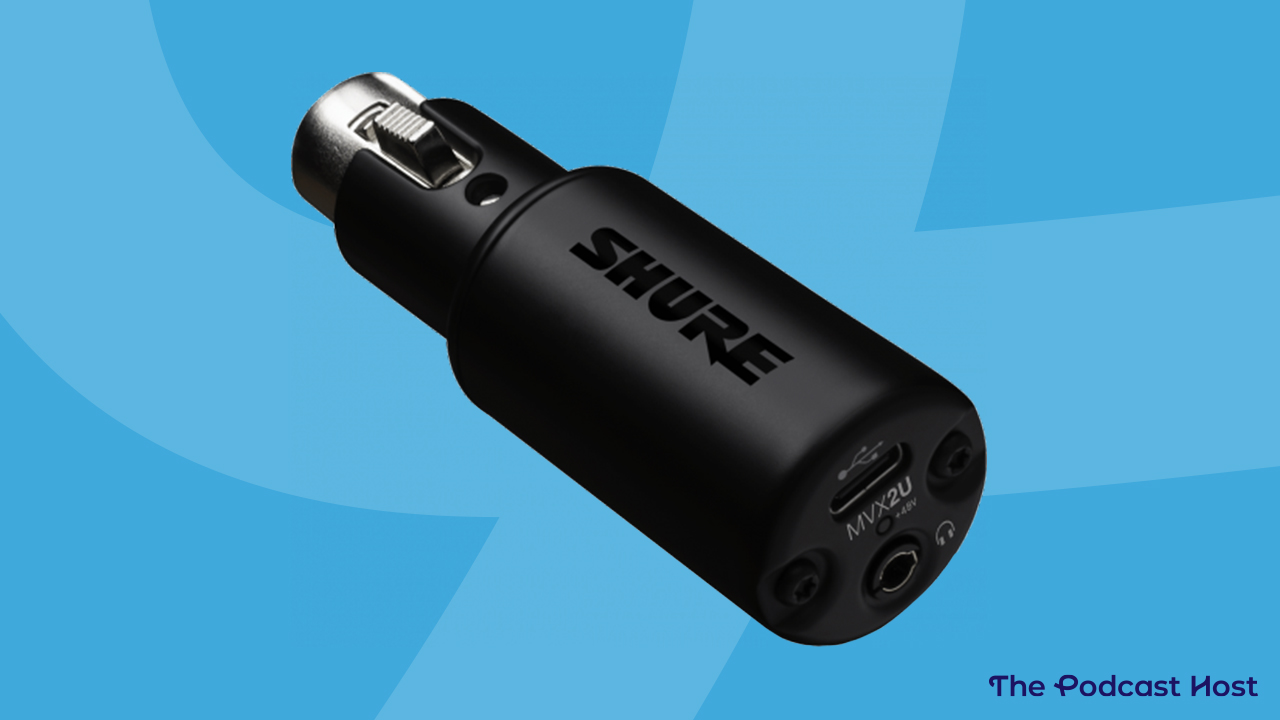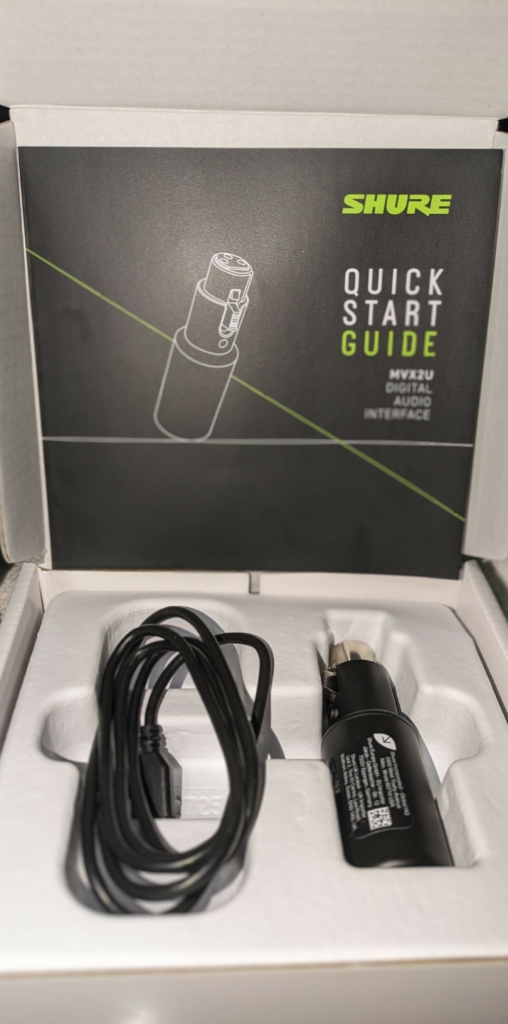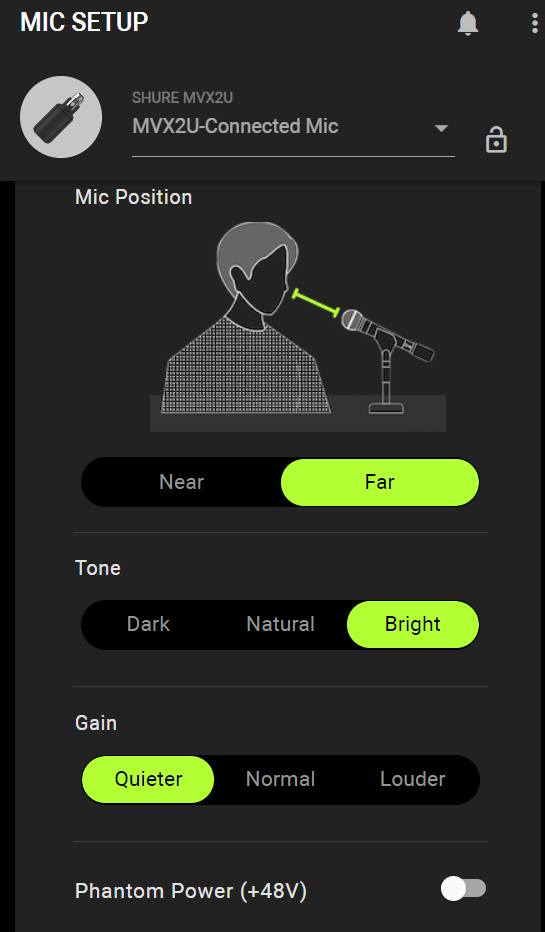Shure MVX2U Review: Auto-Gain Any XLR Mic

In the not-so-distant past, you needed a lot of expensive physical gear and a bunch of cables to add processing to your voice. Then, along came digitization. This meant you could now mix your traditional analogue gear with software, which could simplify the process with plugins.
The drawback was that plugins could only be applied post-recording signal. Where am I going with this? Well, this article will be looking at DSP tech via the Shure MVX2U.

Editor’s Note
Thanks for reading our review of the Shure MVX2U. Just a quick heads up that we received this unit free of charge, and that we also use affiliate links on the site to products and services we think you’ll find interesting. We’d earn a small commission should you choose to buy through them (at no extra cost to yourself), and this helps support all the free content we put out. This will also never cloud our judgement when it comes to writing reviews – we’ll always give you our honest opinions, no matter what!
What is DSP and Why Should I Care?
Before I get into the performance testing of the MVX2U, let me explain what DSP in audio is and why it’s an awesome development for audio hardware.
DSP stands for Digital Signal Processors.
In a typical recording setting, your voice is converted from an analogue source (XLR microphone) into a digital source (interface does this conversion).
Now, DSP technology can manipulate this signal BEFORE it hits your computer and recording software.
Why is this a biggish deal? In our digital audio age, what you record into the DAW is what the signal is. If it clips, even if you put a limiter plugin on the damage, clipping will still be there. All plugin processing is completed post-recording.
But DSP allows us to mimic outboard analogue gear-like signal flow that we can use to shape the signal a bit via compression or EQ, for example, before it hits the DAW/computer.
So, how does this tie into the Shure MVX2U?
What is the Shure MVX2U?
On paper, the Shure MVX2U is an audio interface with DSP technology on an automatic setting. That means any XLR mic can be auto-gained for you. You are no longer restrained to the handful of USB mics that can do this. You could very well use a U87 that is auto-gained to get that classic tone without worrying if your recording levels are set correctly.
The MVX2U is not your traditional interface, either. It fits in the palm of your hand!
Compatibility
For Apple users, it’s business as usual to set up in your sound settings, but for Windows – there’s no ASIO driver from Shure. So, outside of Audacity, other DAWS that cannot use Windows Audio directly need to grab ASIO4ALL or something similar. It’s not recommended by Shure to use with mobile devices as it’s designed specifically to work with their Shure Motiv Desktop software.
Out of the Box
Here’s what you get…
- The MVX2U itself
- Quick Start Guide
- USB C to C cable

If your computer doesn’t have a USB C port, you will need a USB C to A adapter.
Connections on the Shure MVX2U
The device is fairly simple in that it has:
- female XLR connectivity
- one 3.5mm headphone jack for monitoring
- one USB C port to connect to the computer
- one 48V indicator (phantom power)
ShurePlus Motiv Desktop App
All of the DSP features are enabled or disabled in this desktop app.

There are so many settings in both the auto and manual tabs that don’t fit in a screenshot! Fear not, though – the UI is super clean, and it’s very easy to figure out.
I found that the Near setting worked best for a dynamic mic, whereas Far worked best for a condenser mic. Inside the automatic tab, the Tone refers to a vague EQ profile via Dark, Neutral, and Bright.
The gain settings under the automatic tab are labelled Quieter, Normal, and Louder. This is how much input gain is applied based on “how loud” you want the recording to be. I found Normal to be the best approach, but depending on how loud your voice is, you may need to experiment.
Now, if you like control but still want to use an XLR mic as a USB mic with the DSP processing, the manual tab is for you.

Input gain, EQ, high pass filter, limiter (on/off only) and compression are controllable. However, the nitty-gritty compression settings are not controllable and are only altered via Off, Light, Medium, and Heavy.
So that all looks great on paper, right? Now, let’s see (hear!) how the Shure MVX2U performs.
Shure MVX2U Tests
The following tests are all performed using the automatic tab on both a dynamic and condenser mic. I used the standalone iZotope RX Editor to record, as it could easily use Windows Audio and see the MVX2U using MME for the driver type.
SM58 via the Shure MVX2U
Testing a dynamic mic, then, in the form of the Shure SM58, I start off with the loud gain, and there is an impressive amount of it. So much, in fact, that I am clipping a dynamic mic, which is pretty unheard of!
Levels for SM58 Test:
- Louder: -18LUFS or -19.14 dB RMS
- Normal: -26.3 LUFS or -27.2 dB RMS
I didn’t do a quiet test as “normal” was just on the cusp of healthy recording levels. Any lower, and it would be too quiet!
I prefer the normal gain setting for the automatic tab with a dynamic mic. If I didn’t speak immediately in the louder setting, the levels would shoot up. This made the voice a bit choppy but also boosted the room noise significantly with no talking. The normal setting was smooth.
No USB-common interference occurred throughout this test.
Skylight via the Shure MVX2U
This test uses the Skylight from 512 Audio.
The condenser mic test suffered from clipping and noise bursts more significantly than the previous test because condenser mics are more sensitive than their dynamic counterparts.
Levels for Skylight Test:
- Louder: -16.6 LUFS or -17.43 dB RMS
- Normal: -22.0 LUFS or -23.35 dB RMS
- Quieter: -27.8 LUFS or -28.89 dB RMS
Though the “Quieter” auto-gain setting is on the low side, it is still on the cusp of acceptable recording levels. The louder auto-gain setting greatly boosted the background noise and added a bit of hiss. I did a check by boosting both the normal and quiet sections to -16LUFS. The background noise was nowhere as loud as when -16LUFS is reached using the “louder” auto-gained section. Use with caution!
Conclusion: Shure MVX2U
This neat little device can adapt any XLR mic as a USB mic with DSP technology.
The Shure MVX2U is currently priced at $129.99 on Amazon.com
This interface/adapter would work best for:
- Streamers
- Podcasters
- Mobile Podcasters (laptop setup)
The Louder auto-gain setting is pretty iffy, but Normal and Quieter work relatively well. Shure gives you the option of assistance with a clean UI, for those unfamiliar with audio, in the automatic tab, but a more personalized touch with more customization options in the manual tab.
It’s a bit of a disappointment that, currently, the MVX2U doesn’t integrate with the mobile app for mobile devices. But overall, I think it’s a neat little device that allows creators to use mics with more characteristic tone that are typically XLR-only in a USB setup. Additionally, it simplifies the recording process with an added bonus of DSP processing.
The MVX2U isn’t as functional as a traditional interface, like the ones from Focusrite or SSL, so maybe not a main gear contender, but a nice optional addition. However, if you don’t need speaker output or an ASIO driver-based device, it very well could be used as your main setup. It all depends on your needs!
Our Rating: 4.5/5
- Features for Price: 4.5/5
- Performance: 4/5
- Ease of Use: 5/5
- Total: 4.5/5
Still looking to shop around a little? Be sure to check out our full guide to the best audio interfaces!
